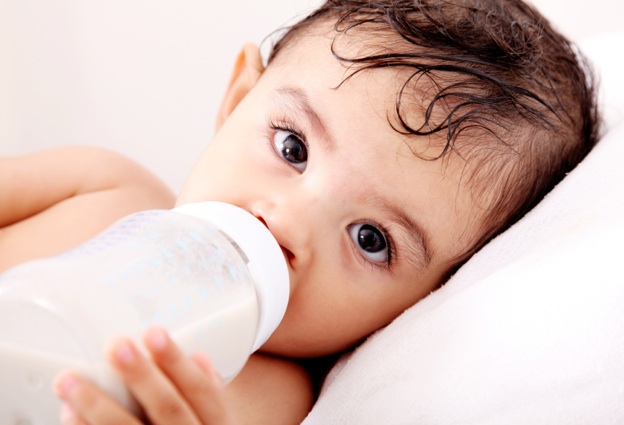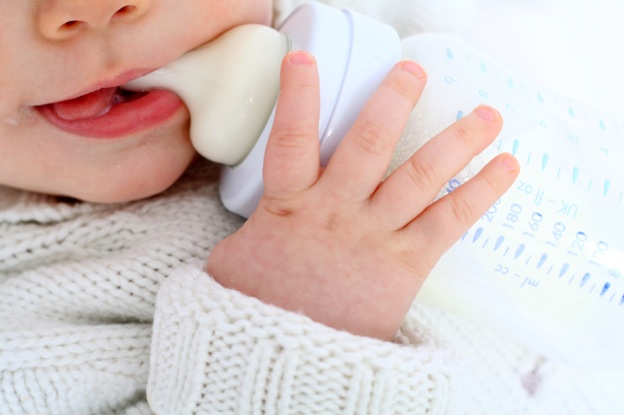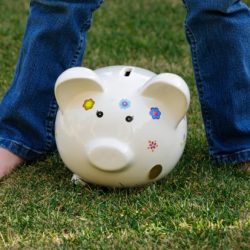SingaporeMotherhood | Baby & Toddler
February 2013
Making Sense of Formula Milk

It is encouraging to see that more new parents in Singapore are realising the importance of breastfeeding. According to a report in The Straits Times last August, hospitals say that more mothers are choosing to breastfeed exclusively. The National University Hospital reported an increase in exclusive breastfeeding rates, from 54 per cent in 2007 to 75 per cent in 2012.
This is good news, especially for babies receiving breast milk. After all, the nutritional and emotional benefits of breastfeeding are well-known.
[banner][/banner]
Breast milk is rich in nutrients and antibodies, which protect babies from illnesses like diarrhoea, lower respiratory infections and ear infections. Breast feeding also helps to build a closer bond between mother and child. And the best thing about breast milk is that it is free!
However, what if the mother is not able to breastfeed exclusively for up to six months as recommended by the World Heath Organization?
In the United Kingdom and the United States, mothers who are unable to breastfeed turn to milk banks for donated breast milk. However, there is no such service in Singapore and mothers here may be tempted to accept excess milk from a friend.
This is not advisable. Breast milk from accredited milk banks is pasteurised and comes from mothers who have been pre-screened medically. Freely donated milk would not have been screened for maternal disease and drug use. The breast milk might also not be developmentally appropriate for the baby. Ideally, the donated milk should come from mothers whose babies are about the same age as the receiving baby.
The only option available then is commercial milk formula. Jane Steinbeck, 31, mother of a four-month-old girl, turned to formula milk sooner then expected when her daughter developed jaundiced and had to be admitted to hospital for phototherapy shortly after birth.
“Due to latching/production issues, I am only able to provide half of what she needs per feed, so we had to supplement with formula. We didn’t have expressed breast milk to leave with her and once home, she needed more to drink in order to flush the jaundice out of her system,” Jane explains.
However Jane has not given up on breastfeeding. She says, “We are persevering with breastfeeding because I know that any amount I can give greatly benefits my baby, giving her nutrients and most importantly, my antibodies. If I cannot exclusively breastfeed, at least I’m assured that she still gets her ‘multi-vitamins’.”
Now if you do need to supplement your baby’s diet with formula, how do you select one that is appropriate for your child?
Choosing The Right Formula
In general, there are three different types of formula – regular formula made from cow’s milk, soya-based formula, and extensively hydrolysed formula.
These are further categorised into three stages to match the developmental needs of the child.
Stage 1 – below 12 months
Stage 2 – after 6 months, also known as follow on formula
Stage 3 onwards – from 1-year-old onwards, also known as growing up milk
Regular cow’s milk formula
Regular milk formula is made from cow’s milk. However it is not advisable to give infants fresh cow’s milk. Cow’s milk contains about three times more protein than breast milk, which makes it harder for baby to digest.
Cow’s milk also contains very little iron, which is necessary for growth. The baby runs the risk of developing iron-deficiency anemia if given cow’s milk too early. The American Academy of Pediatrics recommends all babies under a year old to be either breastfed or given iron-fortified formula.

Stage 1 formulas have been altered such that they closely match the makeup of breast milk. The protein in milk is made up of casein and whey. Stage 1 formulas are whey dominant just like breast milk which has a whey to casein ratio of about 60:40. This formula is suitable for babies up to one year old, and is easy to digest.
Stage 2 formulas are similar to Stage 1 formulas but with a higher casein to whey ratio of 80:20. This takes longer to digest and is suitable for baby’s growing appetite.
Soy-based formula
Soy-based formula is made from soy proteins and is lactose-free. Soy-based formula is often recommended for use when a child shows signs of lactose-intolerance or suffers from common feeding problems like gas, regurgitation and diarrhoea.
Please consult your pediatrician or a medical professional if you suspect your child is lactose-intolerant.
Some parents are also wary of putting their child on soy-based formula for long because soymilk contains compounds called phytoestrogens, which are similar to the female hormone estrogen. While more research on the long-term effects of exposure to excessive phytoestrogens is still needed, doctors say it is perfectly safe for your child to have a bottle or two a day.
Extensively hydrolysed formula
Such formulas are suitable for babies who have protein (casein) allergies and are not able to tolerate either regular formula or soy-based formulas. Extensively hydrolysed formulas are made from cow’s milk like regular formulas but the proteins in the milk have been broken down such that they do not trigger an allergic reaction.
Symptoms of protein allergies include eczema, hives, vomiting, excessive colic, bloating, nasal congestion. A skin prick or blood test will tell if the child has protein allergies.
Growing up milk (Stage 3 and 4)
Once a child is over a year old, doctors and dietitians agree that a glass or two of fresh cow’s milk a day along with a balanced diet is all that is needed.
However, in recent times, special milk formulas for toddlers and older children have been marketed at parents. Ms Chia Wee Leng, Group Brand Manager, Maternal & Infant Nutrition at Nestle Singapore says: “Growing up milk provides children with many essential nutrients to support their developmental needs. A Stage 4 milk combined with an adequate daily diet, would provide children with the nutrients they need for their growing up years.”
Parents should be aware that many brands contain added sweeteners to appeal to the children. However, for many parents this is a small price to pay as growing up milk provides peace of mind.
Sabrina Chew, 33, a mother of a five-year-old son and a three-year-old daughter, says, “My son is a picky eater so giving him growing up milk assures me that he is getting all the nutrients he’s missing out on.”
While Sabrina’s reason is fairly typical of parents of pre-schoolers who are notorious for being fussy about their food, it is important to not get caught up in a vicious cycle.
Children drink so much milk that they don’t have appetite for food. Worried parents then encourage the child to drink more milk to make up the perceived nutritional deficiencies. As long as parents provide access to a wide-range of healthy food, most children are able to regulate their food intake and their diet will even out over time. If the child is of a healthy weight and growing at a normal rate, it is best to restrict milk intake to one to three glasses a day.
Apart from breast milk, which is the perfect food for babies, there is no milk formula that is suitable for every child. Parents need to learn to read ingredient labels to better understand what they are feeding their child. They also need to observe their child closely to see if the formula is suitable. It is only then that they will be able to select the best formula milk for their child.
All content from this article, including images, cannot be reproduced without credits or written permission from SingaporeMotherhood.
Follow us on Facebook, Instagram, and Telegram for the latest article and promotion updates.





